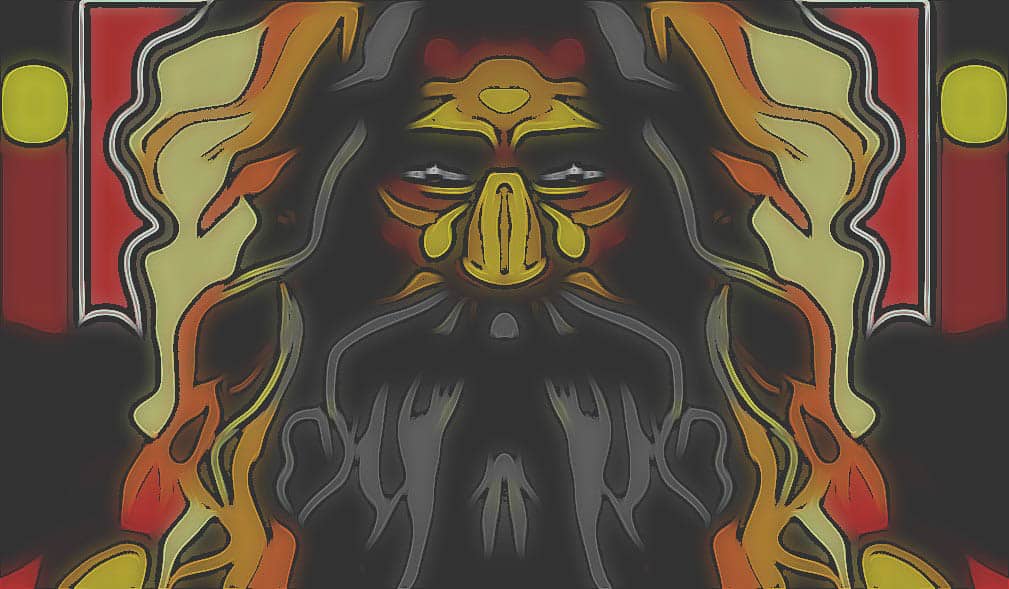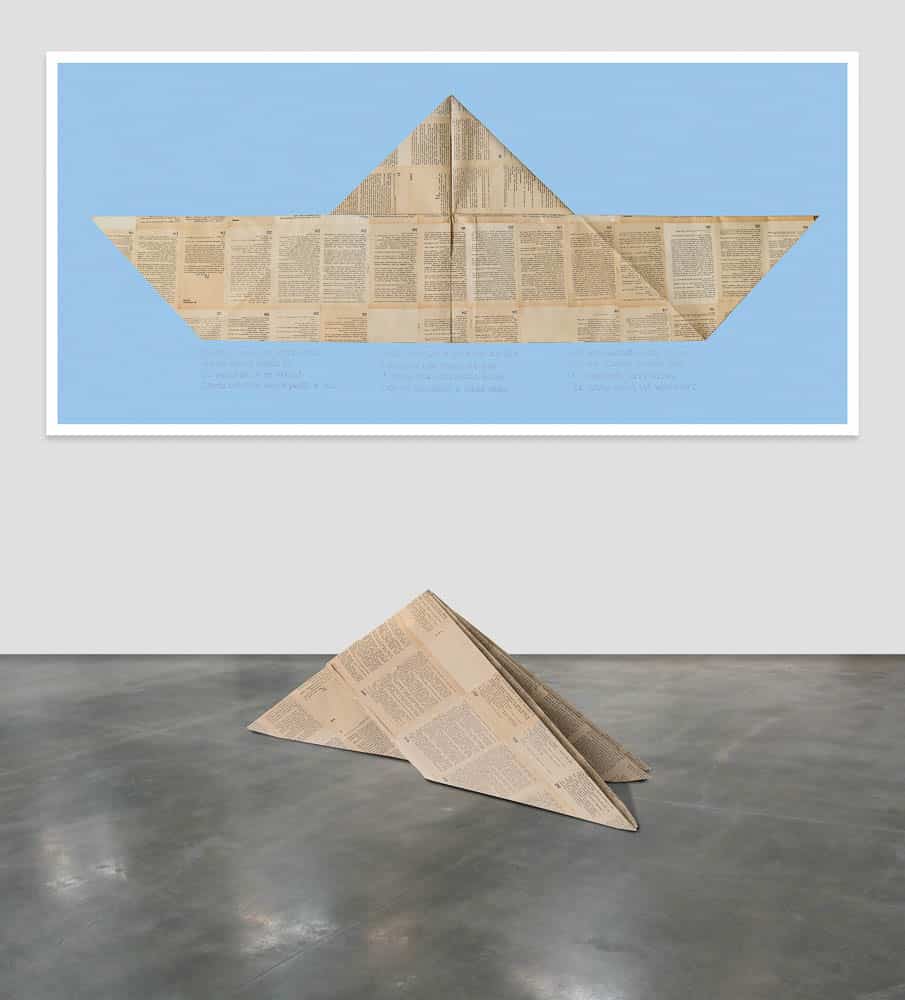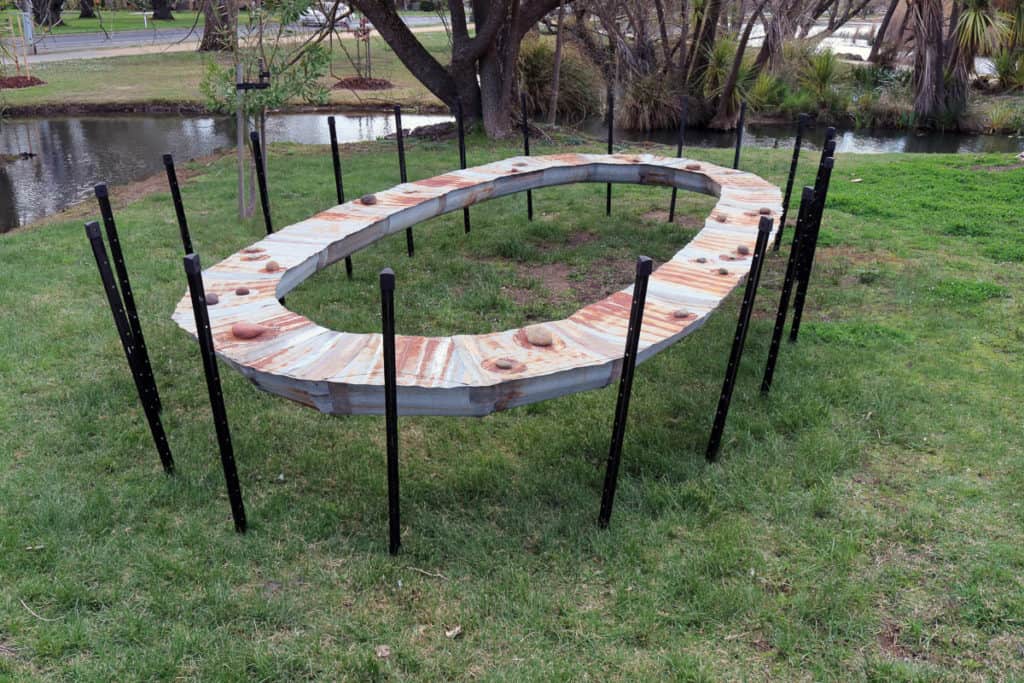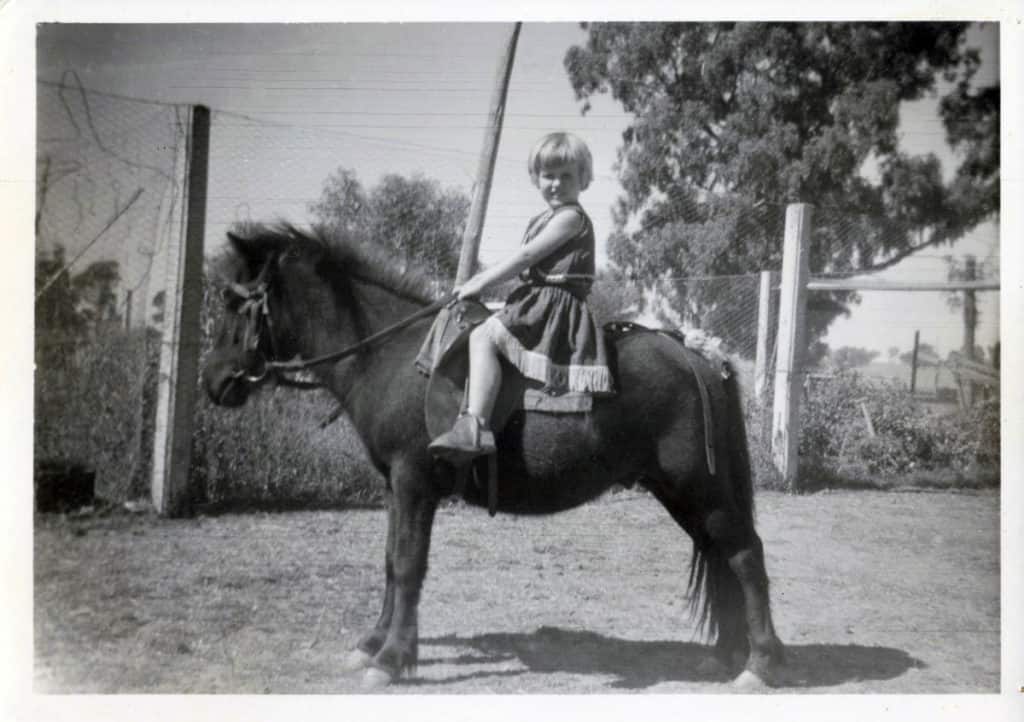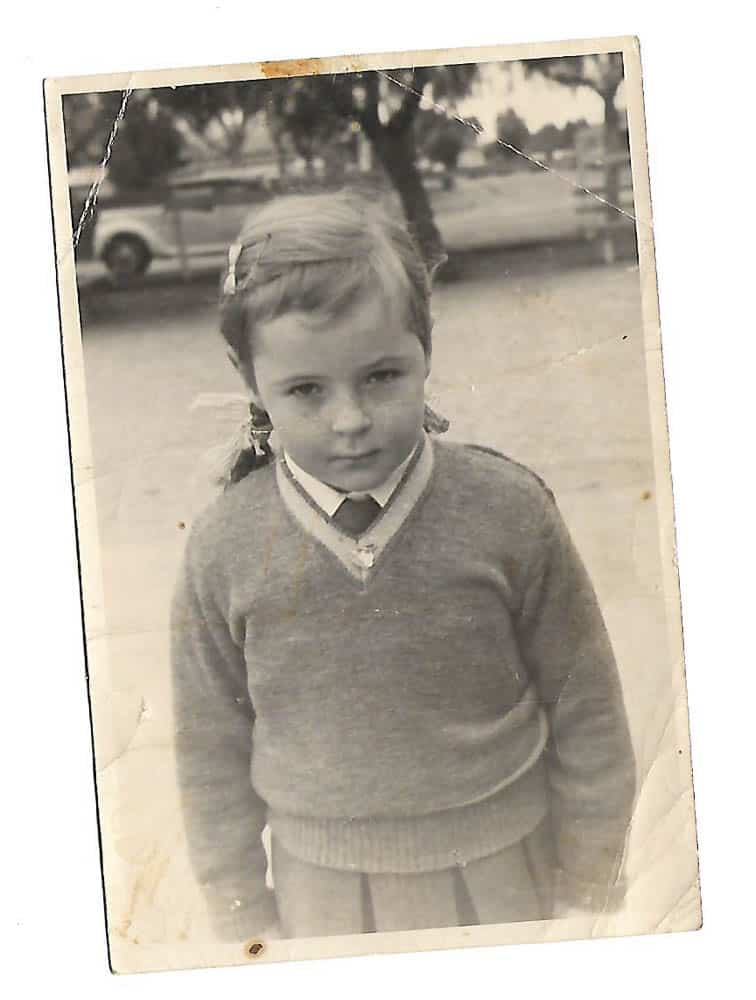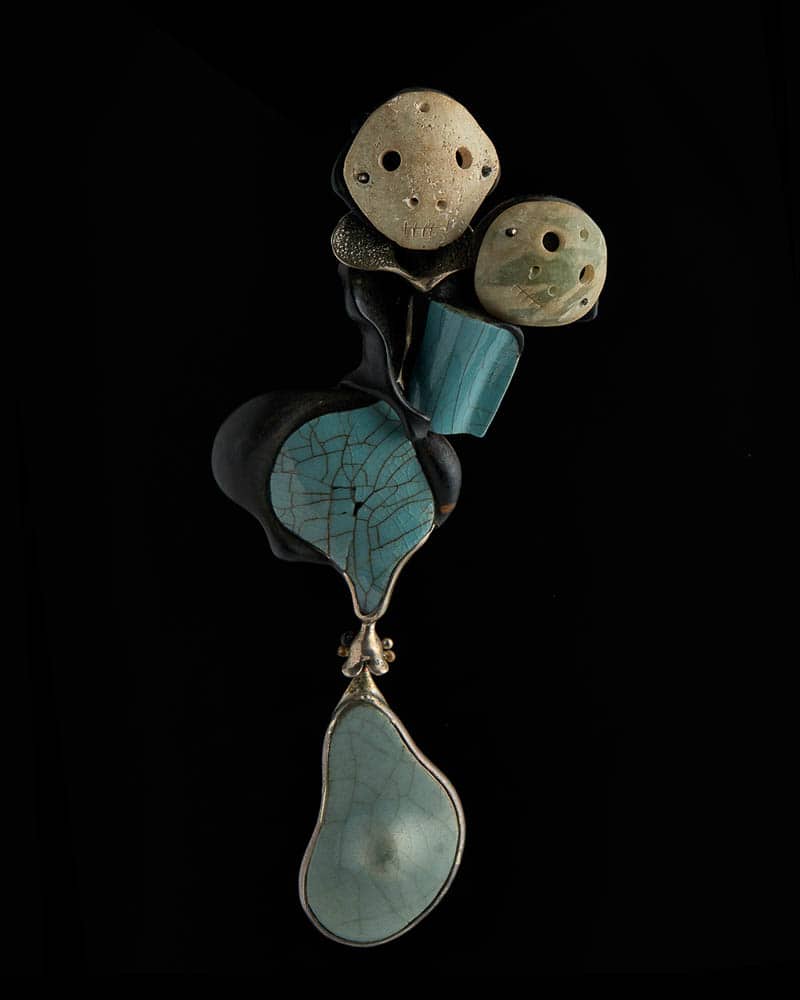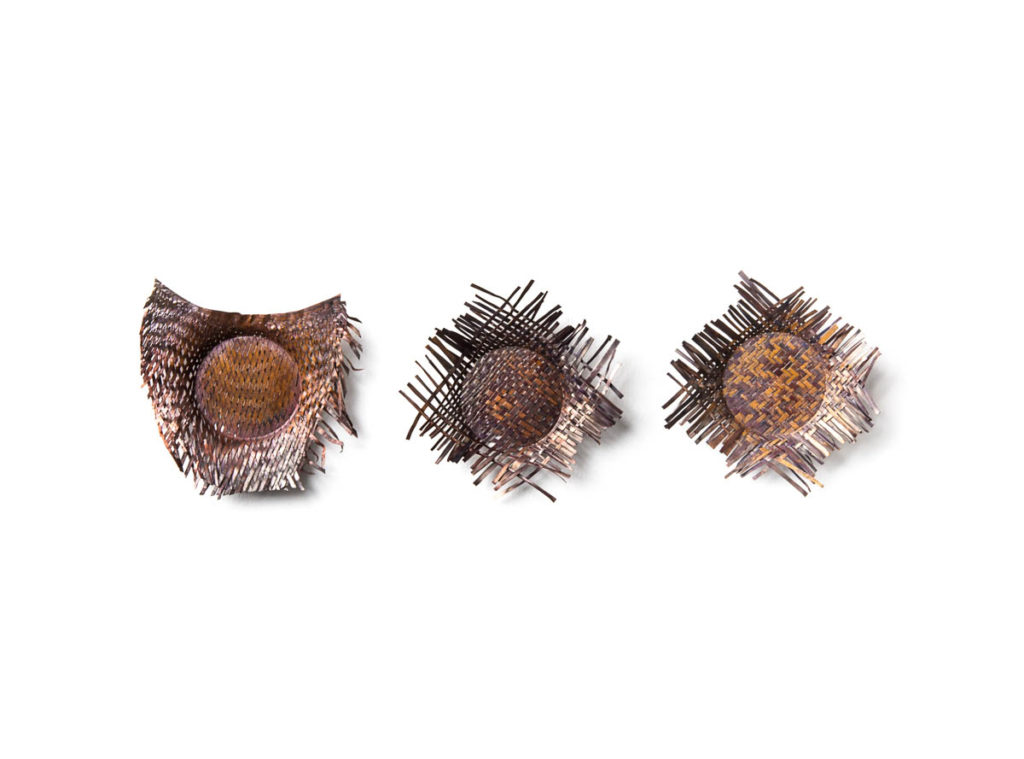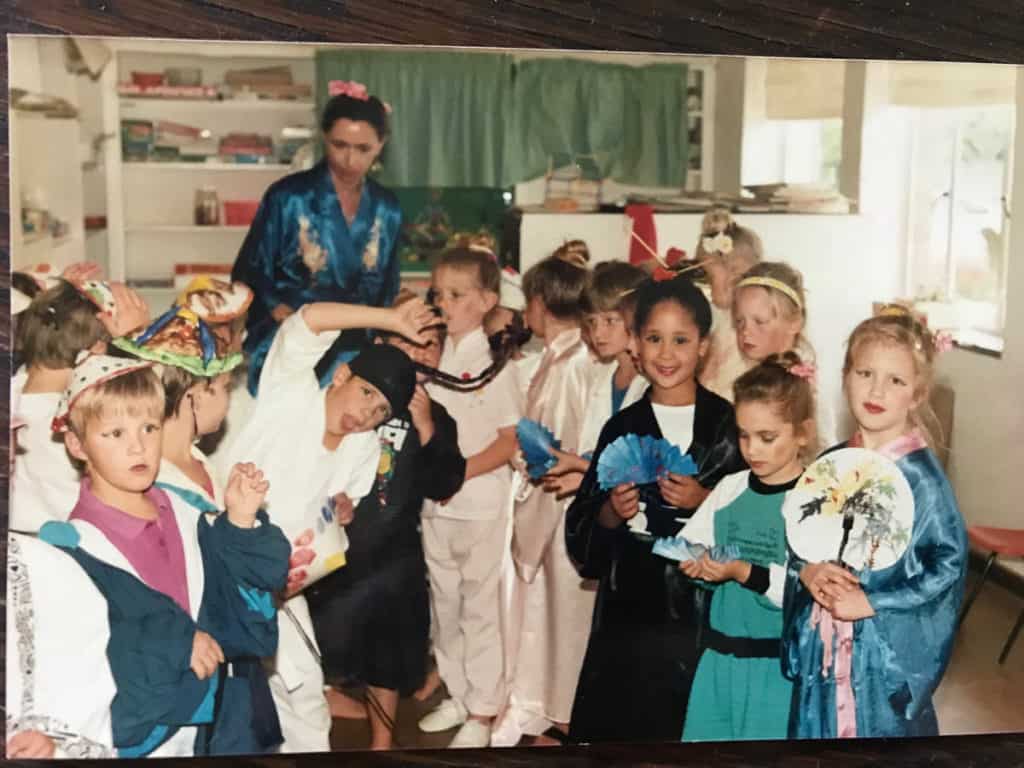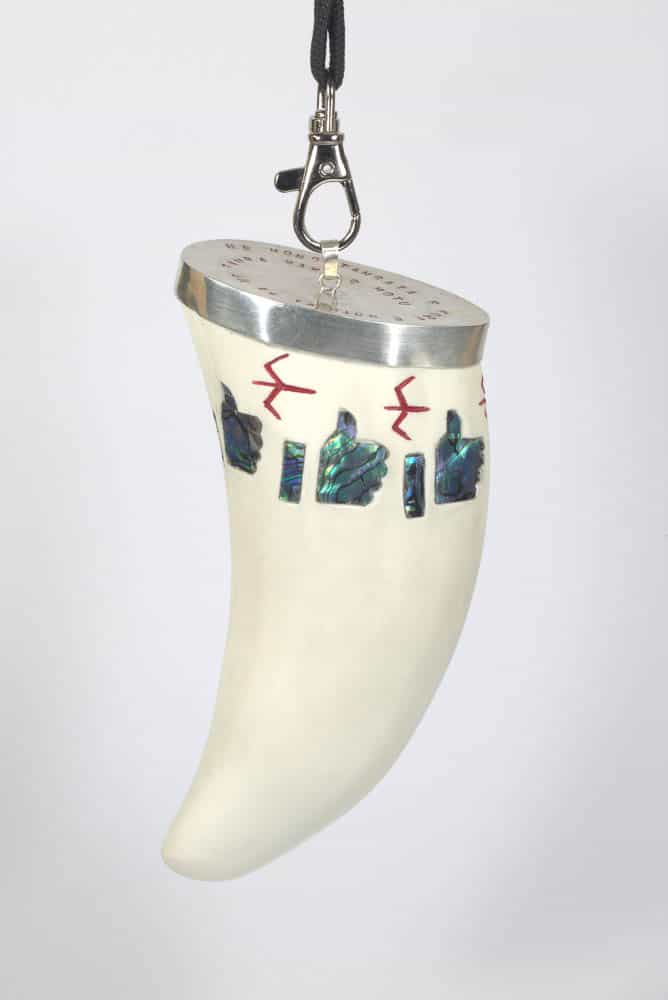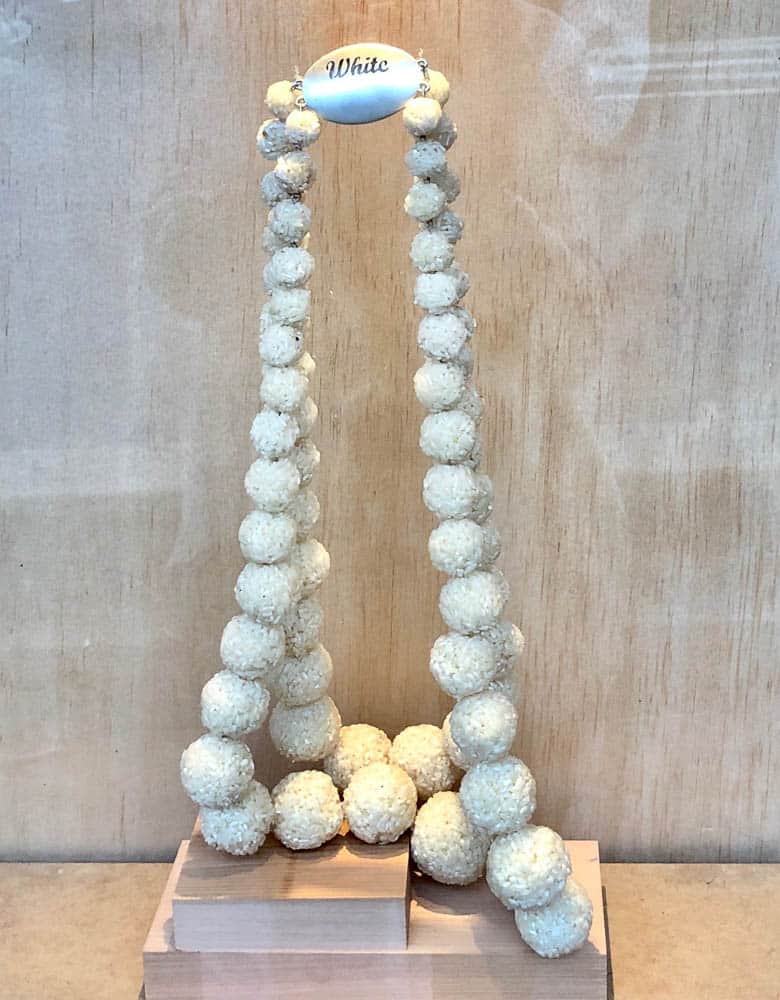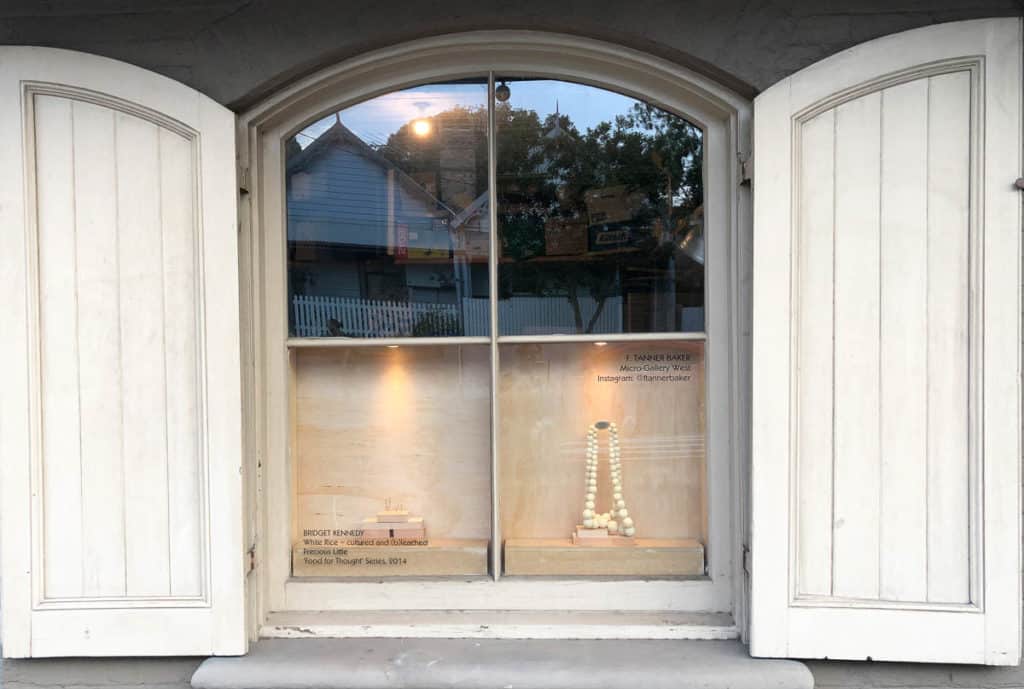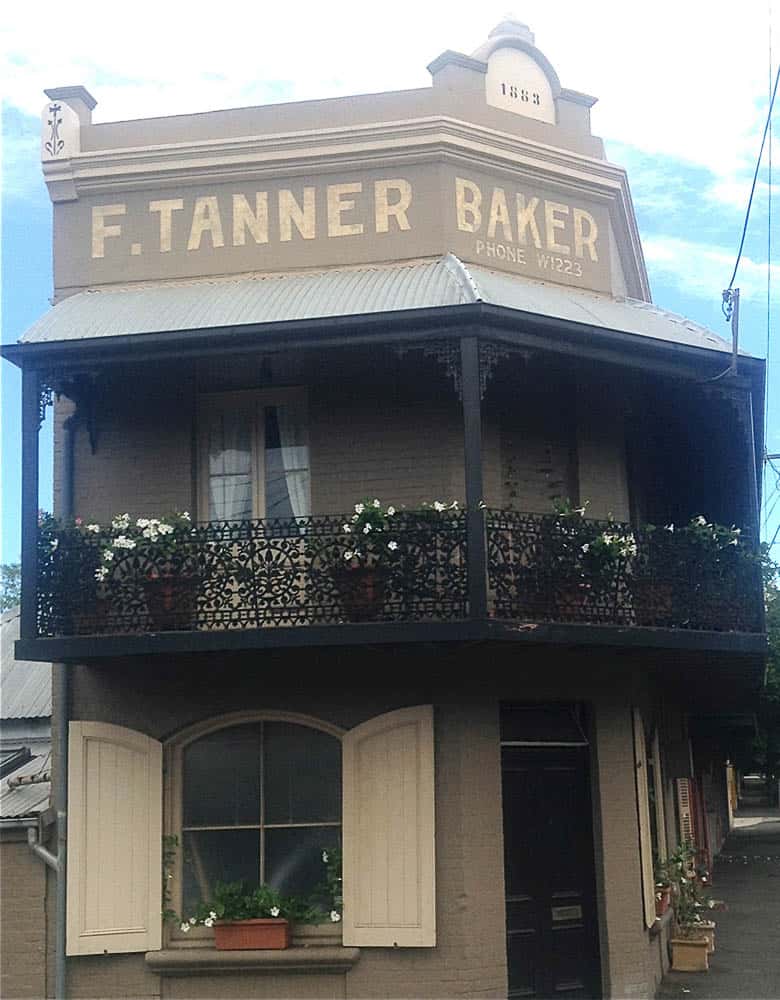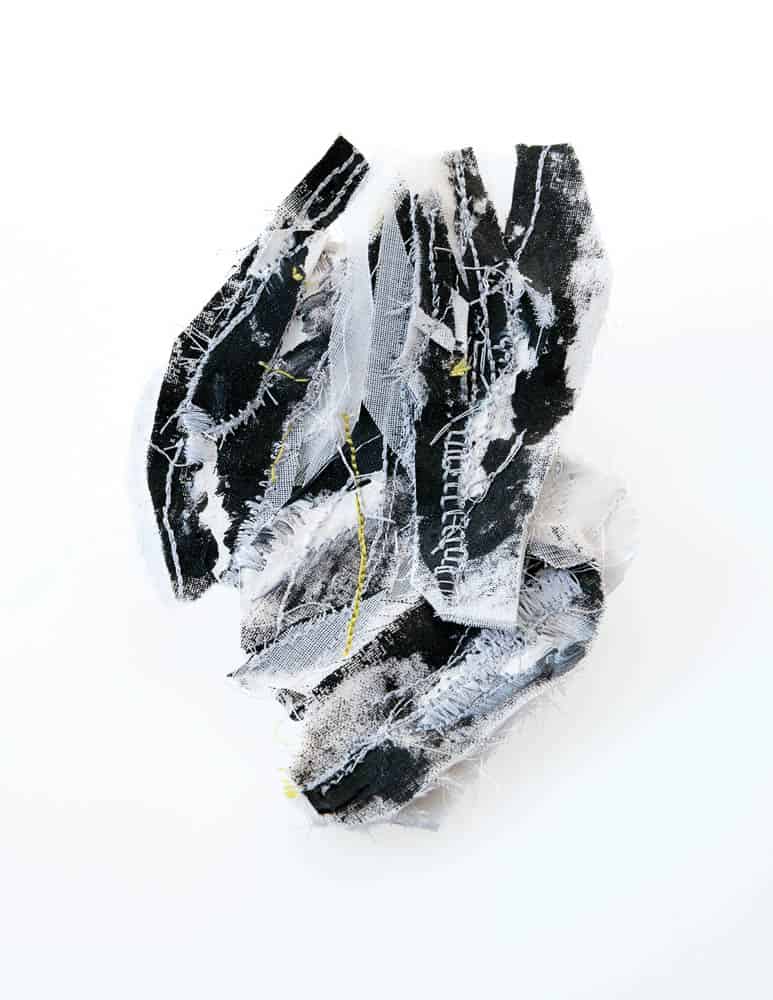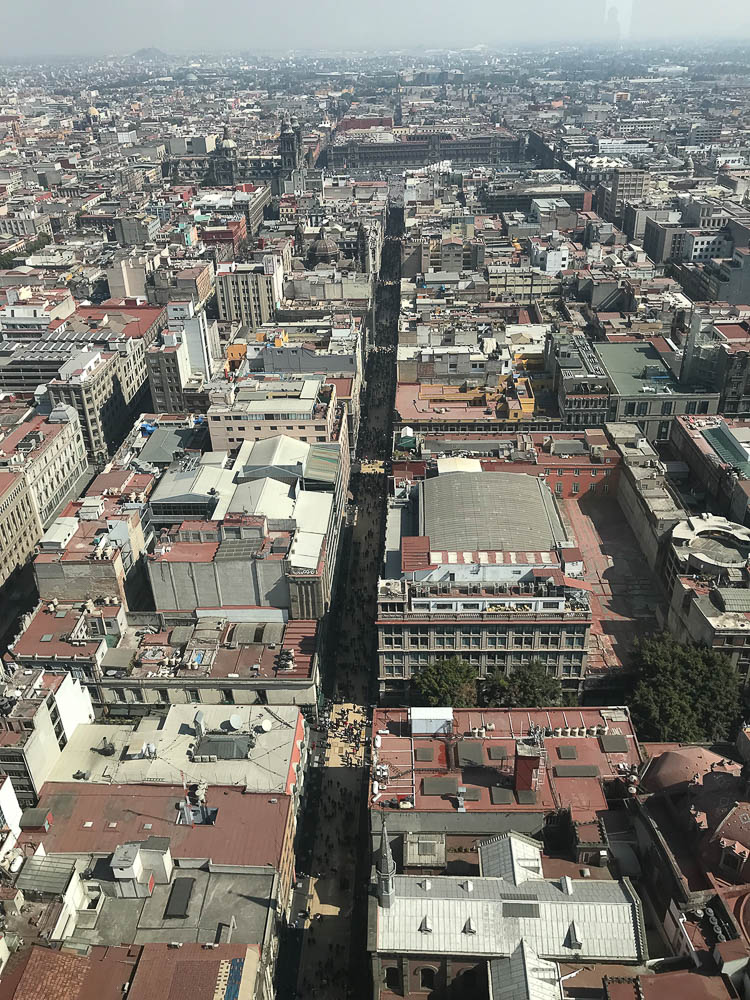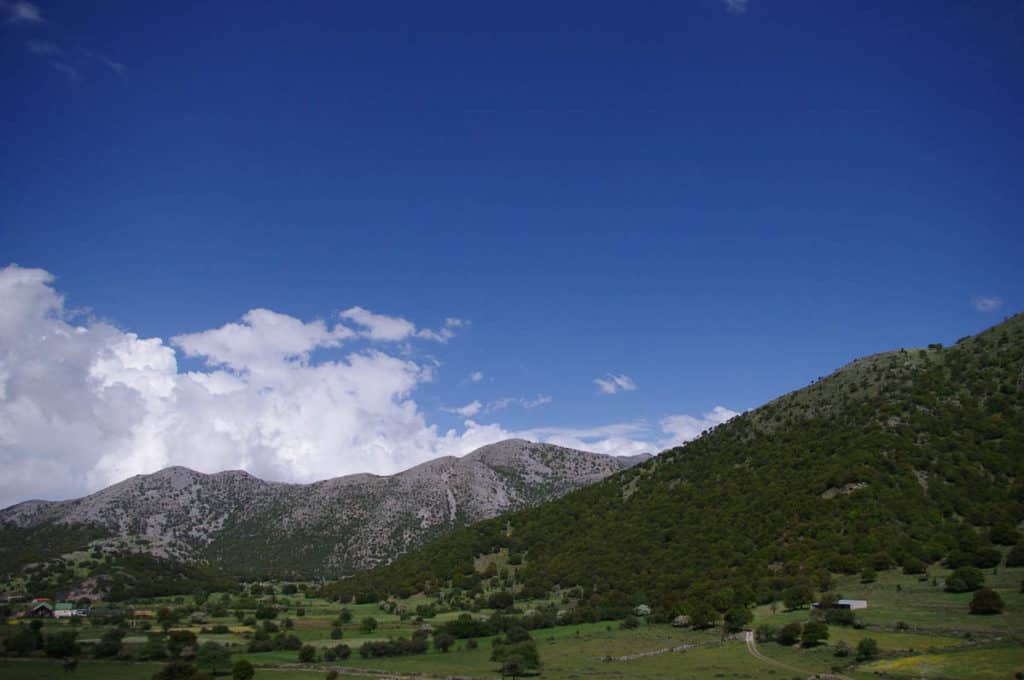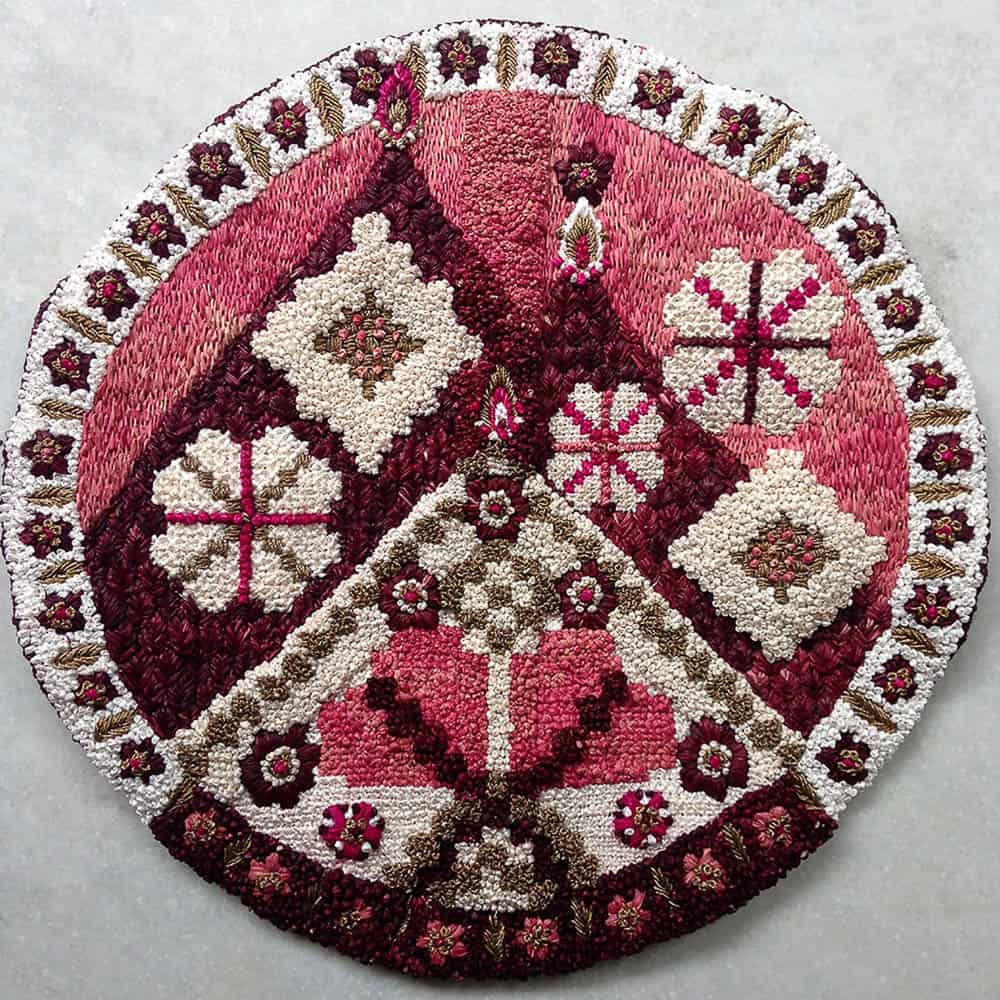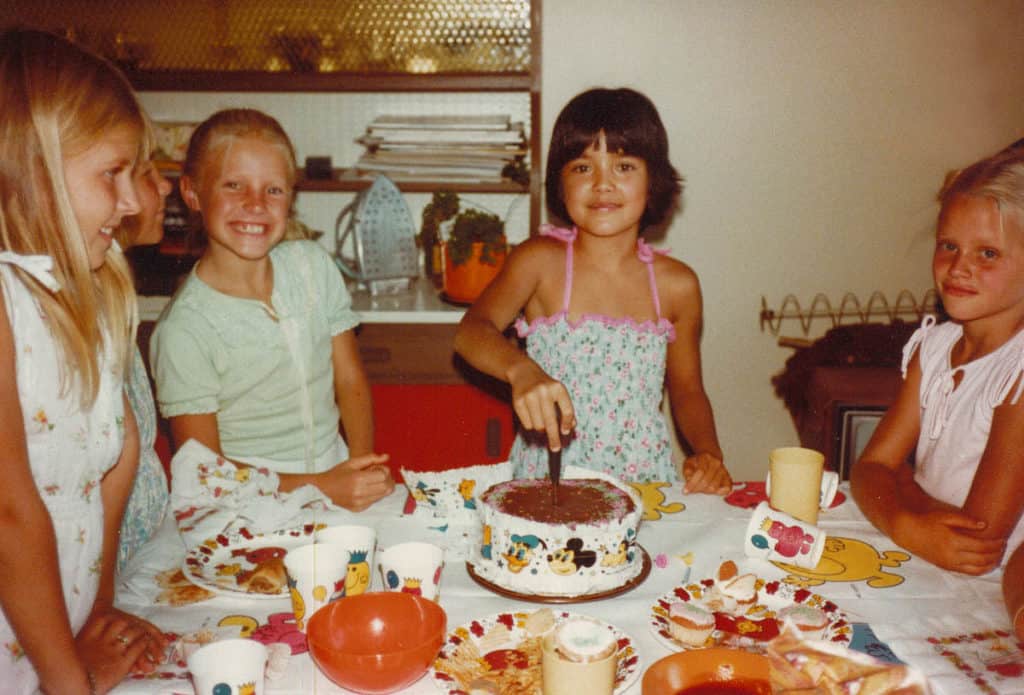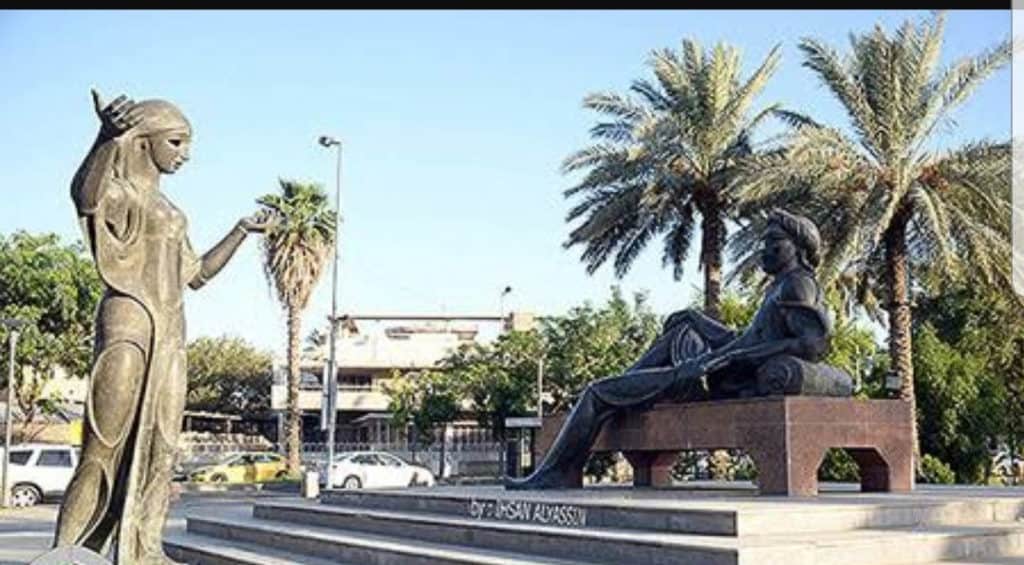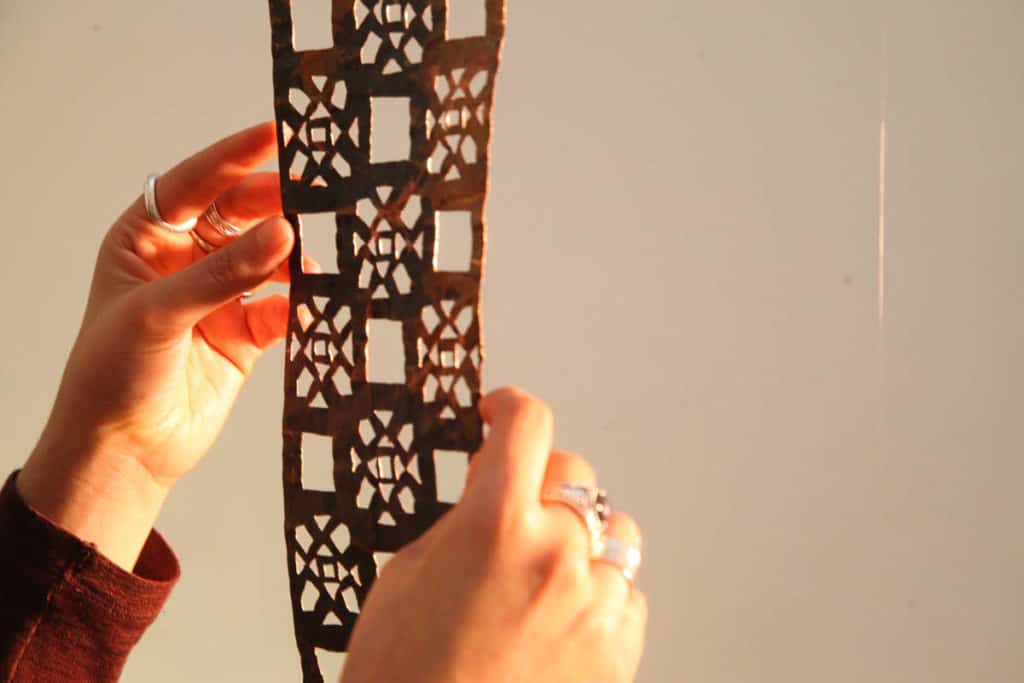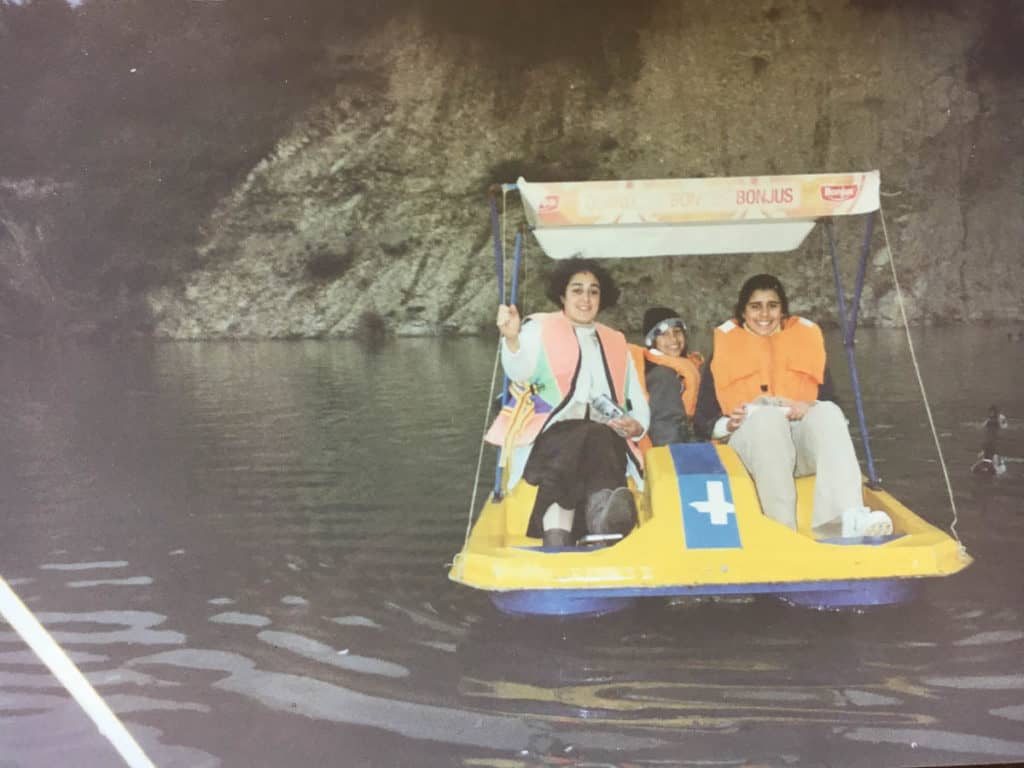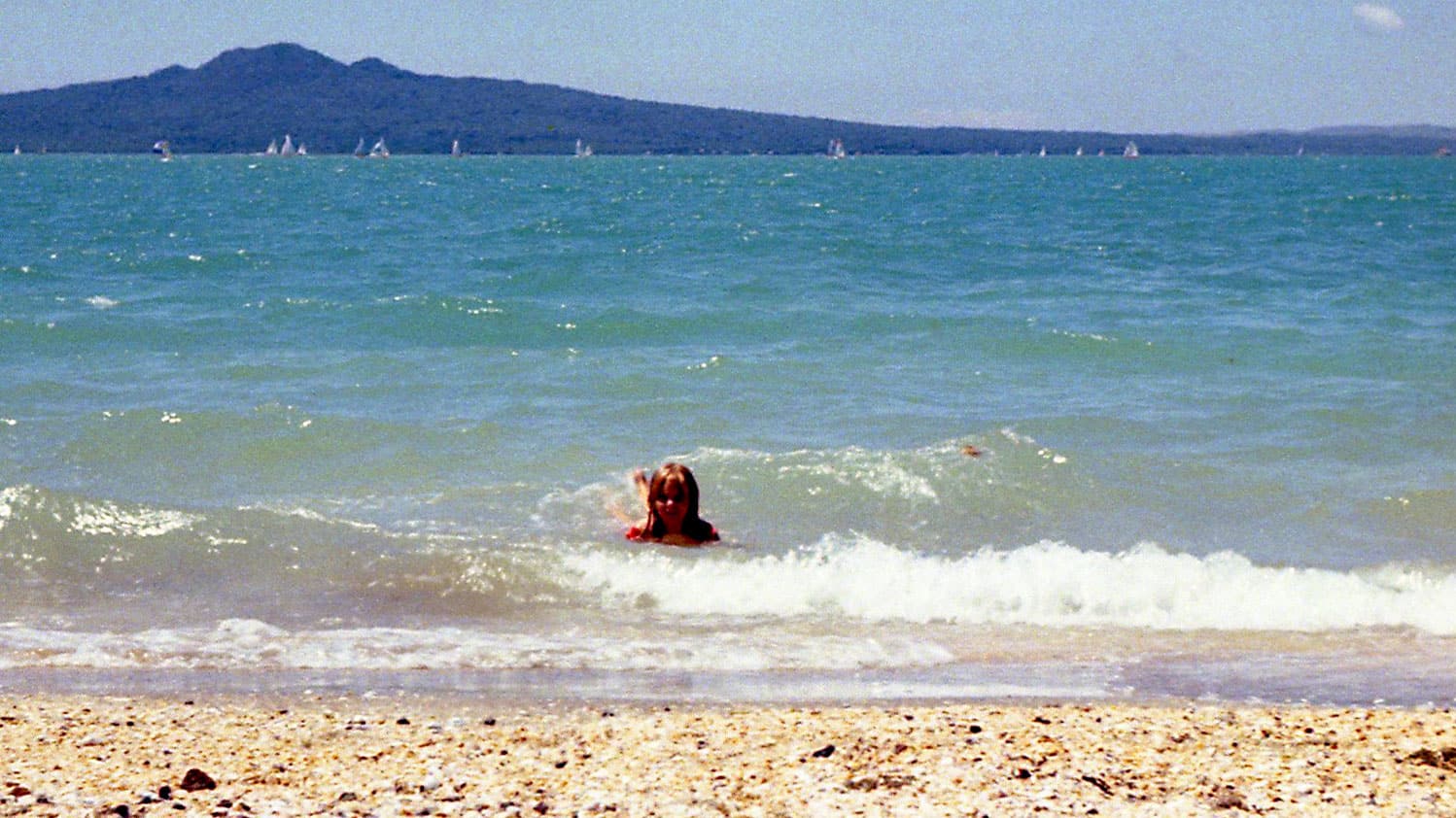
This online exhibition features images of works alongside glimpses of their maker’s past. Tap on each image to see where the artist has come from. Intimations of the journey provide clues about the object’s meaning. Michelle Montgomery sets the scene…
I’ve been thinking about the 50 warm, loving hearts that stopped beating in Christchurch on Friday the fifteenth of March and the countless aching hearts that were left in the wake of the man who took their loved ones from them. Thinking about the concept of Safe Harbour and how they thought they had found theirs. Thinking about how each and every person dislocated from either their physical or ancestral place of origin reconciles where they have come from with where they are now in different ways.
I’ve also been wondering whether craft has the potential to be some kind of magical panacea that could occupy the hands that share the same bodies as stone cold hearts and bring peace to fanatical minds. Don’t be ridiculous is where I got to with that, but the thinking led me down a meandering path to the memory of being trapped in a room full of women who had a lot more to say than I did, while I learned how to weave tapestries.
I did not choose tapestry, it chose me. I was poisoned in the screenprinting lab, so the school forced me to take the only other class available to complete my qualification, Tapestry Weaving. I did not go willingly and resented almost every minute of it, suffering in silence because I knew I was outnumbered and I didn’t want to upset the womby ambience of the room. Those women actually wanted to be there, and they were clearly loving it.
I sat for weeks in front of my metal frame, frowning through the prison bar warp, trying to manifest even tension. Our teacher played classical music, which made me clench my jaw. My classmates chatted amongst themselves as they joyfully whipped up William Morris patterns in their choice of colour palette while I slaved silently over an iconic logo in three colours with no tonal gradation.
I’m not exactly sure when it happened because it crept up without warning, but there was a moment when I became invested in the space and time that was Tapestry. Don’t get too excited, I never got to the point where I was loving it, but what I was loving was all the listening and learning. Our common intent created a ‘circle’ and in it, there was not so much an absence of othering as a presence of trust.
Once a week for six months, I witnessed and shared intimate moments with women from all walks of life and disparate religions. I listened as they talked about their sons volunteering for the army, chatted in graphic, heart-wrenching detail about the feelings of abundance and loss that they had felt as they gave birth or had miscarriages, and candidly discussed the changes wrought by the other rites of passage that intervened in their lives. Most of what I heard was alien to me, I was not living the lives they were living, I had no extended family or children in my reality. The time I spanned in that classroom was akin to the joy of discovering a box of 1960s National Geographics and turning their pages reverently for three hours a week.
My teacher took me aside at the end of the term and told me with a loving smile that she didn’t think tapestry was my destiny. I laughed and told her that I knew it was evident to all concerned that I didn’t have a unicorn in me. She then told me that she thought I was a writer, that craft needs writers and that it was something that she thought I should investigate. Serendipity smiles on us both today as we come full circle and find ourselves in the same place again. Thank you Cresside, I will always appreciate the care you took with the hands and hearts that moved through your classroom.
Having this seemingly random memory while desperately trying to reconcile the brutal reality of the world we live in was my moment of epiphany. The panacea is not the craft; it’s the circles that we sit in as we go about our craft. It’s the conversations we have and hear as we engage in the cathartic repetition of hand work. It’s the coming together and sharing of intention, space and time; this is where the power to change hearts, minds and lives resides.
If you would like to make a donation to the families of the victims of the heartless massacre in Christhurch please click here to be taken to the crowdfunding page set up by the New Zealand Council of Victim Support Groups.
Joshua Muir | Elisa Markes-Young | Hungwei Lee | Wendy Teakel | Johanna Beasley | Dong Han | Cresside Collette | Gussie van der Merwe | Keri-Mei Zagrobelna | Helen Wyatt | Raquel Bessudo | Nicole Polentas | Soraya Abidin | Rhonda Pryor | Sameer Dakhil | Shireen Taweel | Dani Ortman
Joshua Muir
- Joshua Muir, ROOTS
- Joshua Muir, Ballarat
Acknowledging my roots my predecessors and my people’s survival.
Elisa Markes-Young
- Elisa Marks Young, Digital mockup of artwork installation. A folded paper boat made of a Polish 1975 copy of ‘Lonely White Sail’ (or ‘A White Sail Gleams’) by Valentin Kataev and a photograph of the boat with the embroidered text of Mikhail Lermontov’s poem ‘The Sail’ (1832), that inspired the title of Kataev’s book. Size variable (photograph 85x180cm, boat approx. 60x60cm)
- Postcard from 1979.
I was born in Poland and have left at 16. Yet to this day my memories of the place define for me the feeling of being at home. Kataev’s book (written 1936) was required reading in primary school during my childhood. A book describing the 1905 revolution from the viewpoint of two Odessa schoolboys, it was famous and admired for its gorgeous detailed descriptions of the hot Crimean grasslands, the vineyards by the seaside and the life in Odessa. The work was made for an artists book exhibition in 2016 organised by Gallery East in Perth, Western Australia.
Instagram: @zebrafactory
Hungwei Lee
- Hungwei Lee, Enclosed Illumination, 2010, Bamboo, light bulbs, 46 x 33 x 33 cm
- Hungwei Lee, Zhushan Town, Nantou County, Taiwan
Enclosed Illumination was made with bamboo weaving combined with traditional light bulbs. This demonstrates a connection between energy reduction and using environmental-friendly-materials.
I came from Zhushan Town (Zhushan in mandarin called Bamboo Mountain), in Nantou County sits at the centre of Taiwan. I am the fourth generations in my family to work in Taiwan’s bamboo forestry industry. My quest is to develop an individual practice and academic at the juncture of bamboo art, craft and design.
Wendy Teakel
- Wendy Teakel Cycle 2018, corrugated iron, stones, wire, star pickets, H140 X W 450 X D 650 cm
- Wendy Teakel on her pony outside the vegie patch 1963 age
“Cycle” is a suspended elliptical form made from rusted iron, river stones and star pickets. Its materiality and vernacular construction are synonymous with the Australian bush. Physically it draws on dry creek beds, dusty tracks and fences for inspiration. With no apparent end or beginning, the work reflects metaphorically on the endless cycles that define rural life within daily, generational and climatic phases. I grew up on farms around Wagga Wagga NSW.
Instagram: @teakelwendy
Johanna Beasley
- Johanna Beasley, 2018, “Birchip to Nakoronawa a Family Rememberance”,vau,magi magi,photographs,tapa,ceramics,32cms x34cms, photo: Johanna Beasley
This work was made on the theme of Family for the Fiji National Art Exhibition 2018, in remembrance of my family and Ratu Soqeta and my adopted Fiji family. It expresses my journey from one village to another.
My dream was to one day be garlanded. I have researched and made many types of garlands and the aroma and the beauty of these wonderful creations never ceases to make me happy.
After Cyclone Winston I made a contemporary salusalu from newspaper cuttings and headlines from local newspapers. This work was auctioned to raise money for flood victims, this was my first and many followed. Several celebrated the Fiji 7s win at the Rio Olympics, climate change and other local issues.
The salusalu I have selected was made by combining a traditional British floral ceramic tray, Royal Wilton “Beeston” used by my late mother. It had been part of my life and after the pieces broke it travelled with me to Fiji. I made this work to remember Ratu Soqeta and my mother and father.
I used photos I had taken during my stay in the village and added a salusalu made from traditional vau. I added magi magi (coconut fibre) around each photo. I did not use fresh flowers as I wanted the work to last. I added small pieces of tapa and uci, a fragrant small flower to provide the fragrance that is integral in a salusalu
The work combines two cultures. Where I came from and where I am now.
Dong Han
- Dong Han,Mother And Child(Brooch),2013,Jade mask,porcelain,silver,wood.6×1.8x14cm,Photo-Lei He
- Dong Han, Mother And Child
My first memory is that my mother took me to ride a bike by the river in my hometown. Maternal love and nature are the source of inspiration for my creation, which is also my favourite theme in my creation.
Cresside Collette
- Cresside Collette, ‘The Western Monasteries 1, Anuradhapura’, 2017, woven tapestry, 9 x 58 cm., photo: Tim Gresham
- Ath Pokuna, Anuradhapura’, 2016, photo: Cresside Collette
The work was woven to be part of my current exhibition of tapestries titled Postcards from Home. It reflects the ancient history of the country I came from, Ceylon/Sri Lanka.
Gussie van der Merwe
- Gussie van der Merwe, Bowl Objects, 2017, Copper, 10 x 10 x 1.5cm each
- Gussie van der Merwe – Stellenbosch SA 1992
These small bowls were made in Shanghai where I have been living for the last five years, obsessing over weaving and absorbing as much Chinese culture as possible. Growing up in Stellenbosch, South Africa I knew little of this vast country and its culture, so distinct from its Asian neighbours. Looking at this photo of my kindergarten class during our “Asian-day” dress up, I can’t believe how privileged I now am to be living, working and travelling in China.
www.gussievandermerwe.yolasite.com
Instagram: @gussievdmerwe
Keri-Mei Zagrobelna
- Keri-Mei Zagrobelna, Niho Tohorā, 2018, Sterling silver, paua, resin, enamel, 140mm X 60mm 50mm, photo credit: Stefan Simons
This piece was created for our London exhibition “Te Ao HuriHuri” this exhibition was at The Crypt Gallery in London and was exhibited whilst the Oceania Cook retrospective was showing at the London Royal Academy of Arts.
The paua inserts are the thumbs up emoji from social media platforms such as facebook and messanger. The red navigator birds are known throughout the wider Pacific region as a symbol of travel. The two placed going in opposite directions to one another are speaking about the exchange of storytelling, knowledge and whakapapa (genealogy). It is meant to also speak to the new generations that being brought up around this new form of communications and the power of the “word”. Most Pacific culture stories were passed on verbally and now we see due to technology a new form of this storytelling. It has given the Pacific people a power to be able to share and keep alive many of cultural stories and traditions.
The author Lana Lopesi talks about these critical aspects in her 2018 published book “False Divides”. She states; “Moana-nui-a-Kiwa is the great ocean continent. While it is common to understand the ocean as something that divides land, for those Indigenous to the Pacific or the Moana, it was traditionally a connector and an ancestor. Imperialism in the Moana, however, created false divides between islands and separated their peoples.” In this BWB Text, Lana Lopesi argues that globalising technologies and the adaptability of Moana peoples are now turning the ocean back into the unifying continent that it once was.
On the top of the piece is a Maori whakatauki (proverb) which is a recurring theme throughout my art practice it says: “He hono tangata e kore e motu; ka pa he taura waka e motu”. Unlike a canoe rope, a human bond cannot be severed.
Meaning the strength and the unity of people is key. The whale tooth as the object for the piece is symbolism related to Pacific and Maori adornment and object exchange with other cultures. The technique of insert and scrimshaw on the tooth is to represent “European sailors'” craft techniques when on long voyages across the oceans .The lanyard represents today technology and everyday life and has weaved red crosses in it to represent tukutuku and also the lei.
Instagram: @keri_mei_z
Helen Wyatt & Bridget Kennedy
- Bridget Kennedy, White Rice, 2014, rice ,925 silver, string, approx.70x5cms, photo: Helen Wyatt
- Bridget Kennedy window exhibition
- F Tanner Baker
I have lived in this old bakery for forty years on Sydney’s Balmain Peninsula and have wanted to honour its history and contribute to the local community by enlivening the street. The shopfront includes generous windows that lent itself to a Micro-gallery size exhibition space. I have established a non-commercial window gallery that exhibits works that stimulate reflection and, I hope, discussion. In this first exhibition of the year, Bridget Kennedy has shown her beautiful hand made works highlighting food’s intrinsic value and the labour involved in its production. On show are two works, White Rice: cultured and (b)leached, and Precious Little. They are part of her Food for Thought Series 2014. The focus on food in this exhibition connects with the actual history of the building. Bridget Kennedy made the White Rice necklace; Window Gallery by Helen Wyatt
https://www.facebook.com/f.tannerbaker/
Instagram: @ftannerbaker
Raquel Bessudo
- RaquelBessudo, Paths II, 2018,Iron, textile, acrylic paint, gesso, polyester thread, 13.2 x 9.3 x 0.8 cm, Paths II
- Calles de Mexico, 42.33 x56.44cm, photo: Raquel Bessudo
If we think about walking as a continuous act of mark making, and that with its recurrence these marks have deepened, etch by time throughout history they became pathways for communication. Made in Mexico City
Instagram: @raquelbessudojoyeria
Nicole Polentas
- Nicole Polentas, Thirty Three 4, 2017, Sterling silver, silver alloy, copper, brass, resin, poly-putty, glass powder, ink, paint, epoxy, 551 x 120 x 65 mm, Photo: Kate Mollison
- Nicole Polentas, Polentas, Sfakia, Crete
Drawing from women’s laments within Greek literature, the jewellery seeks to reveal the intersection between one’s psyche and experience. Personal experience is reactivated into tangible forms and images. A visual poïesis is deliberated through fragmentation and abstraction, which emerges from the nuance of experiential reflection.
https://www.facebook.com/nicolepolentasjewellery/
Soraya Abidin
- Soraya Abidin, Peace Mountain, 2016, Hand embroidered vintage Swiss straw, synthetic and dyed natural raffia, metal thread, 50 x 50 x 2.5 cm. Photo: Soraya Abidin
- Birthday party, growing up in Campbelltown in the 1970’s my bi-culture stood out. Soraya-Abidin
The creation of this piece began in Sydney Australia and was completed during an Arts residency at Rimbun Dahan Arts Centre KL Malaysia
Peace Mountain is a hand embroidered piece, I tend to work with non-traditional materials in an unexpected manner. Traditional Malay Songket motifs embedded in the piece depict an awareness, presence of a higher being and purpose in humanity.
Instagram: @sorayaartis
Sameer Dakhil
- Sameer Dakhil, Brass Pen, 2016, brass, 14cm×1cm
- Sameer
I am from Iraq, this pen was made for Australia, because I received my visa.
Instagram: @SameerDakhil
Shireen Taweel
- Shireen Taweel, razing legacy, 2019, pierced copper, detail of installation, photo by Omar Sfeir
- Our first family visit to Lebanon in 2003 with my mother and younger sister
Hand pierced from pre-used copper, razing legacy is a recent installation exploring the future heritage of Beirut’s built environment.
Born and raised in Sydney to migrant Lebanese parents, a great sense of where I come from is rooted in my Lebanese ancestry. “ shireen_taweel
www.shireentaweel.com

